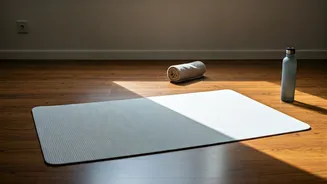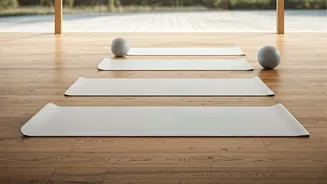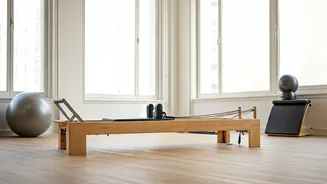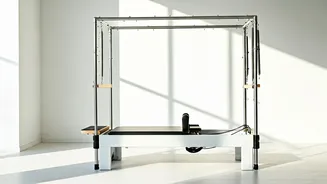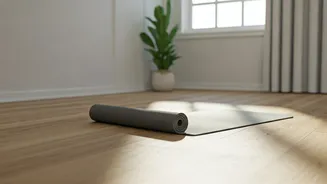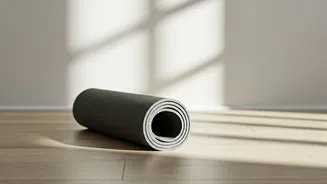Pilates Basics Explained
Pilates is a system of exercises that focuses on core strength, flexibility, and body awareness. It was developed by Joseph Pilates in the early 20th century.
The core is the powerhouse of the body. Pilates emphasizes controlled movements, precise alignment, and proper breathing. The exercises are typically performed on a mat or using specialized equipment. Beginners should start slowly, focusing on correct form over speed or the number of repetitions. With consistent practice, Pilates can improve posture, reduce stress, and enhance overall physical health. It is suitable for people of all ages and fitness levels, offering a versatile workout regimen that can be adapted to individual needs.
The Hundred
The Hundred is a fundamental Pilates exercise that warms up the body and engages the core. To perform it, lie on your back with your knees bent and feet flat on the floor, or if you're ready for more of a challenge, raise your legs to a tabletop position (knees bent at a 90-degree angle). Lift your head and shoulders off the mat, engaging your abdominal muscles. Extend your arms by your sides, palms down. Begin pumping your arms up and down, keeping them close to the ground, while inhaling for five counts and exhaling for five counts. Repeat this cycle ten times, aiming for a total of 100 pumps. This exercise strengthens the core, improves breathing, and increases circulation.
Rolling Like a Ball
This exercise is excellent for massaging the spine and improving balance. Start by sitting on your mat with your knees bent and your feet lifted off the floor. Grasp your shins, keeping your back rounded and your core engaged. Inhale, and then exhale as you roll back onto your shoulder blades, maintaining the rounded shape of your spine. Inhale as you roll back up to the starting position. Repeat this movement several times, focusing on control and coordination. Avoid rolling onto your neck. This exercise enhances spinal mobility and strengthens the abdominal muscles. It also builds body awareness and coordination.
Single Leg Circles
Single Leg Circles helps to improve core stability and coordination. Lie on your back with one leg extended towards the ceiling and the other leg bent on the mat. Engage your core and keep your lower back pressed into the mat. Gently circle the raised leg outward and around, drawing a small circle in the air. Perform a few circles in one direction, and then reverse the direction. Repeat with the other leg. Focus on keeping your core stable and preventing your hips from rocking. This exercise strengthens the abdominal muscles, improves hip flexibility, and enhances coordination.
Spine Stretch Forward
Spine Stretch Forward improves flexibility and stretches the spine. Sit tall with your legs extended in front of you and your feet flexed. Extend your arms forward at shoulder height. Inhale to prepare, and then exhale as you round your spine, reaching your arms toward your toes. Inhale to sit back up, stacking your vertebrae one at a time. This exercise stretches the back muscles, improves posture, and increases spinal mobility. Maintain a straight back throughout the exercise. This exercise stretches the back muscles and improves overall posture. It is a great way to relieve back pain and improve body awareness.
Swimming
Swimming is a challenging exercise that works the entire body, focusing on core stability and coordination. Lie face down on the mat with your arms and legs extended. Engage your core and lift your arms and legs off the mat. Begin alternating lifting opposite arm and leg, mimicking a swimming motion. Keep your core engaged to prevent your torso from twisting. Breathe steadily throughout the exercise. This exercise strengthens the back muscles, improves coordination, and enhances core stability. Maintain a long spine and avoid arching your back. Focus on controlled movements and steady breathing.




